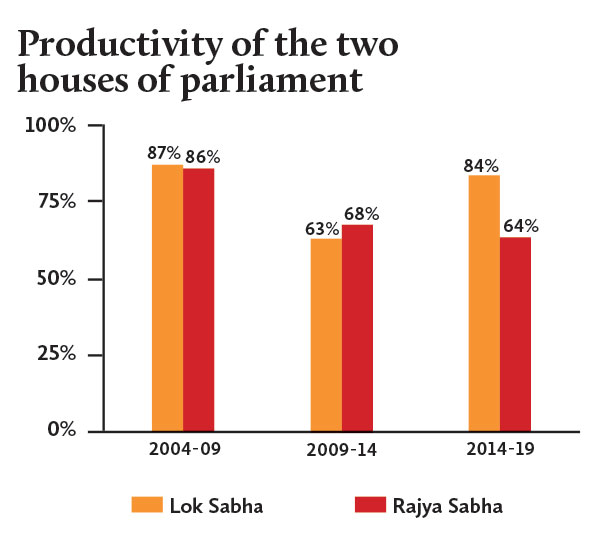Continuing our regular coverage of India’s parliamentary sessions, Mandira Kala assesses the performance of the Lok Sabha in the past five years compared with the two previous terms
The 2019 budget session of India’s parliament concluded in February, marking the end of the five-year term of the 16th Lok Sabha. In this term, the Lok Sabha, the lower house of the bicameral legislature, witnessed a single-party majority for the first time since 1989.
This article examines the productivity of the two houses of the parliament during the past five years, and the time spent by them on core functions such as making laws, holding the government accountable, and discussing important issues. It also discusses the legislative businesses transacted, the role of parliamentary committees, and the making of laws through ordinances, overlooking the role of parliament as an institution.
The Lok Sabha worked for the second-lowest number of hours when compared with other full-term Lok Sabhas since 1952. It lost 16% of its scheduled time to disruptions, which is better than the previous Lok Sabha (37%) but worse than the 14th Lok Sabha (13%).
While both houses of parliament performed similarly during the previous two terms, the Rajya Sabha’s (upper house) productivity was significantly less this time. It lost 36% of its scheduled time to disruptions, higher than the Lok Sabha’s 16%. This is also reflected in the functioning of the question hour, the time reserved for the government’s replies to questions asked by members. Question hour worked for 41% of its scheduled time in the Rajya Sabha, whereas the figure for the Lok Sabha was higher at 67%.

You must be a
subscribersubscribersubscribersubscriber
to read this content, please
subscribesubscribesubscribesubscribe
today.
For group subscribers, please click here to access.
Interested in group subscription? Please contact us.


























